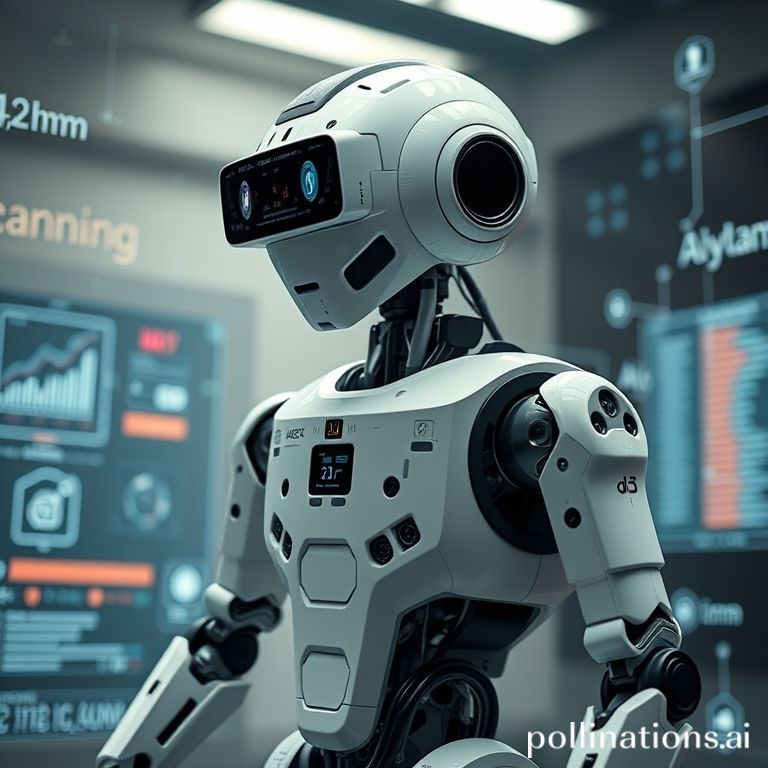
Google DeepMind has recently unveiled two groundbreaking artificial intelligence models designed to propel the development of robots capable of understanding their environments and executing intricate tasks with unprecedented intelligence. This significant advancement builds upon the foundational Gemini Robotics models introduced earlier in March, enhancing them with sophisticated thinking mechanisms that foster agentic experiences, as detailed in a recent blog post.
The introduction of these new models marks a pivotal moment in the realm of AI-powered robotics, bridging the gap between theoretical AI capabilities and practical, real-world applications. By integrating advanced reasoning and planning, Google DeepMind aims to create robots that are not merely reactive but truly autonomous and intelligent, capable of navigating and interacting with the complex physical world.
Introducing Gemini Robotics 1.5 and Gemini Robotics-ER 1.5
At the heart of this innovation are two distinct yet complementary models: Gemini Robotics 1.5 and Gemini Robotics-ER 1.5. Each model serves a crucial function in enabling more intelligent robotic operations.
Gemini Robotics 1.5: The Vision-Language-Action (VLA) Model
Gemini Robotics 1.5 is engineered as a vision-language-action (VLA) model. Its primary function is to interpret visual information and explicit instructions, translating them into precise motor commands. This capability allows robots to perceive their surroundings, comprehend human directives, and then physically act upon that understanding. Essentially, it provides the robot with the ability to "see," "understand," and "do," making it highly effective for tasks requiring direct manipulation and interaction within an environment.
Gemini Robotics-ER 1.5: The Vision-Language Model (VLM) for Strategic Planning
Complementing the VLA model, Gemini Robotics-ER 1.5 operates as a vision-language model (VLM). This model excels in generating multi-step plans to successfully complete a given mission. Instead of directly issuing motor commands, the VLM focuses on high-level strategic thinking, breaking down complex objectives into a sequence of actionable steps. This allows robots to approach tasks with a structured methodology, anticipating outcomes and adapting their plans as necessary. Gemini Robotics-ER 1.5 was made available to developers on Thursday, while Gemini Robotics 1.5 is currently offered to select partners, indicating a phased rollout approach for these advanced technologies.
The Significance of Agentic Capabilities
Carolina Parada, a senior engineering manager at Google AI, underscored the profound impact of these models. She stated that these innovations represent “a foundational step toward building robots that can navigate the complexities of the physical world with intelligence and dexterity.” This sentiment highlights the long-term vision of Google DeepMind to create robots that are not only efficient but also adaptable and contextually aware.
Parada further elaborated on the broader implications, asserting that “Gemini Robotics 1.5 marks an important milestone toward solving AGI in the physical world.” She emphasized that by introducing agentic capabilities, the research is moving beyond models that merely react to commands. Instead, it fosters the creation of systems that can truly reason, plan, actively use tools, and generalize their learning across different scenarios. This leap towards agentic AI is crucial for developing robots that can operate autonomously in dynamic and unpredictable real-world settings, making intelligent decisions without constant human oversight.
The Evolving Landscape of AI Robotics
The development from Google DeepMind is part of a larger trend witnessing a surge in AI robotics across Silicon Valley and beyond. The integration of large language models (LLMs) is fundamentally transforming robotics, endowing machines with the capacity to comprehend natural language commands and execute complex tasks with newfound proficiency. This paradigm shift is enabling robots to move beyond repetitive industrial applications towards more versatile, general-purpose roles.
Beyond Google DeepMind’s Gemini Robotics, other prominent tech giants and innovative startups are actively contributing to this burgeoning field. Meta’s PARTNR, Nvidia’s Isaac Groot N1, and Tesla’s Optimus are notable examples of companies developing advanced humanoid robots. Additionally, specialized AI robotics startups such as Figure AI and Cobot are pushing the boundaries of what humanoid robots can achieve in performing diverse tasks. These collective efforts signal a future where intelligent robots are integral to various aspects of daily life and industry.
Further solidifying this trend, companies like FieldAI recently raised significant funding to accelerate the global adoption of its general-purpose robots. FieldAI is pioneering a single software brain designed to power a wide array of robots, which are currently deployed in demanding sectors like construction, manufacturing, urban delivery, and inspection. Similarly, Skild AI introduced an AI model capable of running on almost any robot, with its Skild Brain enabling different types of robots to think, function, and respond more like humans. These advancements collectively underscore a rapid progression towards a future where robots possess sophisticated intelligence and dexterity, seamlessly integrating into complex human environments and tasks.
Conclusion
The latest innovations from Google DeepMind, particularly the agentic capabilities embedded in Gemini Robotics 1.5 and Gemini Robotics-ER 1.5, signify a monumental step towards achieving Artificial General Intelligence in physical systems. By empowering robots with the ability to reason, plan, and generalize, these models are laying the groundwork for a new generation of intelligent machines. The collaborative efforts across the tech industry, from established giants to nimble startups, are accelerating this transformation, promising a future where robots can intelligently navigate and contribute meaningfully to the complexities of our world. This ongoing evolution is set to redefine efficiency, safety, and capability across countless industries.
